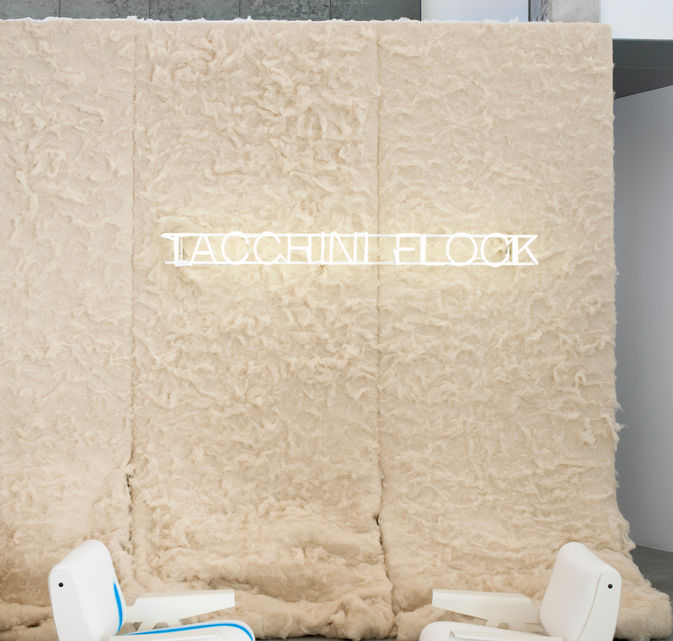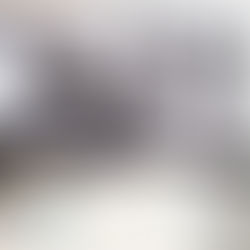What is ecological stained glass?
It's stained glass made from papier-mâché or wood, instead of lead, natural glue and pigments. Caroline Vauvert-Valarcher of Maison Arcanthe, trained at Floraluz in the south of France, uses this technique and gives us a little history of the art.
Originally, lead was the material of choice for stained glass. With a very good reparability rate due to its "soft" nature (which means that a broken piece of glass can be repaired on the spot), it is also very well recycled, particularly in Europe and North America, as it is used extensively in electric batteries (around 70% of lead is properly recycled).
So why find an alternative to lead? Well-known for causing health problems such as lead poisoning, lead is a non-renewable resource, like many other metals, and increasingly difficult to extract pure. In ancient times, the Romans were even said to have lined their wine barrels with lead because it gave them a sweet taste, hence the fact that lead poisoning has been linked to its presence in household paints that children loved to scratch and put in their mouths.
And it was in Guatemala, in the small Mayan village of San Marcos La Laguna, that Juan Villatoro, a glass artist renamed Patik by the locals, invented this papier-mâché stained-glass technique some twenty years ago. His work can be admired at the Hotel Lush.
In the old days, stained glass was made of lead. Then, in the 20th century, copper and tin were developed. And for the last twenty years or so, there's been this environmentally-friendly pulp technique. It's best used in environments where humidity levels aren't too high, as it's true that paper softens in storms if stained glass is used outdoors, but hardens again immediately afterwards. Another advantage is that you can play with the setting colors, notably with ochres (Caroline works with Ocre de France). For churches and places of worship, it's best to double-glaze with a pane of glass, or thermoformed glass on top. Churches are starting to use double-glazing to protect stained glass windows, of course, but also for thermoregulation purposes.
Of course, it's still hard to achieve totally environmentally-friendly stained glass, given that transport is still the biggest polluter, especially the last ten kilometers in vans.

Caroline from Maison Arcanthe © Cécile Schuhmann
What is the place of biomimicry today in architecture? To shed light on this vast question, we interviewed the Habitat and Territories division of Ceebios, the Center for Studies and Expertise dedicated to the deployment of Biomimicry in France.
When did biomimicry appear as a concept adapted to architecture?
Drawing inspiration from the living to design and build is nothing new. Several types of architecture throughout history reflect this trend: vernacular, Japanese, solar, organic or even biomorphic architecture. These concepts converge towards biomimicry.
Interest in biomimicry applied to architecture accelerated in the 1970s, particularly after the oil crises of 1973 and 1979. Indeed, this context of energy transition, awareness of environmental impacts and the realization of bio-inspired projects, has highlighted this new approach. See the book "Has Biomimicry in Architecture Arrived in France? Diversity of Challenges & Opportunities for a Paradigm Shift" by Estelle Cruz, Eduardo Blanco, Fabienne Aujard and Kalina Raskin.
But we find the premises of this approach in the design of... the Eiffel Tower (!): Gustave Eiffel (1832 - 1923) would indeed have been inspired by the work of Professor Karl Culmann of Zürich, who, seeking to develop a power crane, visited the no less eminent professor of anatomy Hermann von Meyer, and was inspired by the bony trabeculae of the cutting of a femur bone, for the metallic architecture of its crane - taken up in its principles by Gustave Eiffel for his eponymous tower!
Other architects such as Antonio Gaudi (1852 - 1926), who had already been greatly inspired by nature on the ornamental level, was one of the first architects to put into practice the optimization of architectural forms through experiments weight suspensions, his polyfunicular models, in order to visualize the natural lines of force, which he then reproduced inverted in columns with plant shapes, like those of the Sagrada Familia in Barcelona.
Polyfunicular model for the Colonia Güell church, Sagrada Família museum, Barcelona.
Interior of the expiatory temple of the Sagrada Familia in Barcelona. Photo: Heimo66, 2006.
The American engineer-architect Richard Buckminster Fuller (1895 - 1983) would have been inspired by the structure of radiolarians, microscopic zooplankton, of which he consulted the numerous reproductions present in Kunsmormen der Natur (1904) by Ernst Haeckel, to design his famous geodesic domes.

© Cedric Thevenet. Environment Canada Biosphere, Montreal - Geodesic dome by Richard Buckminster Fuller, 1967. Environment Museum by Eric Gauthier, 1995.
But probably the person who contributed most to the study of natural structural forms for architecture is the German engineer-architect Frei Otto (1925). As early as 1960, Otto set up a biological research unit on natural structures. Inspired by plant cells, soap bubbles and other organic shapes, the team developed a structural shell system whose skin was inflated with air. This research also led to the publication in 1982 of a work that has become the benchmark for bionic architecture: "Natuerliche Konstruktionen", translated into French as "Architecture bionique".

© "Biomimetic architecture: when architecture is inspired by nature", Symbiopolis editions.
Frei Otto founded in Berlin in 1957 the "Entwicklungsstä Je für den Leichtbau" (Centre for the Development of Lightweight Constructions), which he transferred seven years later to Stuttgart where it became the famous Institut für Leichte Flächentragwerke / Institute for Lightweight Structures (IL) , the most advanced center today in biomimetic architecture, with in particular the work of Achim Menges.
Is there a "founding father" of biomimicry and more generally of ecology?
Humanity has been intuitively inspired by nature for millennia, and there are many historical examples, such as the studies of the flight of birds for the design of flying machines by Leonardo da Vinci, who said "Go take your lessons in the nature, there is our future", or closer to us, George de Mestral who invented Velcro in 1948, at the sight of burdock flowers clinging to his coat and the hair of his dog after a walk.
"Copying Nature" became a field of research during the 1960s, when the term Biomimetics (Biomimetics) was first used by the American biophysicist and inventor Otto Herbert Schmitt (1913 - 1998) during a meeting in 1963 at Dayton Air Force Base, Ohio. Otto Schmitt then defined biomimetics as "the examination of biological phenomena in the hope of generating ideas and inspiration for developing physical or biophysical systems in the image of life".
The concept previously covered the imitation of nature only to create more efficient products and processes, in particular within the arms or aeronautics industry.
Biomimicry has experienced significant growth since the 90s with the growing awareness of ecological issues. The American ecologist and writer Janine Benyus (1958) was perhaps the first to have grasped all the interest of biomimicry in creating a more sustainable world in her reference work "Biomimicry: innovation inspired by Nature" by Janine Benyus and William Morrow, published in 1997.
The prairie style (Frank Lloyd Wright), organic architecture (Jacques Couëlle and Anti Lovag) or archiborescence (Luc Shuiten), so many concepts that all converge towards biomimicry?
Vernacular architecture, solar architecture, traditional Japanese architecture, organic or even ecological architecture have certainly all developed a form of relationship with the living, and sometimes implemented the principles of the living, but without ever having it. structured in a design and innovation approach exclusively based on the understanding and inspiration of the strategies and characteristics of living things with the assumed objective of "renaturalizing" the building by integrating it as best as possible into the balance of the surrounding ecosystems.
Biomimicry (durability) and bio-inspiration (arabesque): what are the differences?
Bio-inspiration is a creative approach based on the observation of living things.
Biomimicry is a philosophy, interdisciplinary conceptual approaches, which aims to take nature as a model in order to develop new solutions by limiting their impact on the biosphere. Biomimicry aims at a cooperation of biology and technology or other fields of innovation in order to solve practical problems through the functional analysis of biological systems, their abstraction into models and the transfer and the application of these models to the solution, with a view to sustainability. According the ISO TC266 standard.
There are large-scale projects, such as the Skolkovo Innovation Center in Moscow, the Russian Silicon Valley, which uses the penguin heating system... A recent example of a bio-inspired city or district?
The future building of the CIRC (International Center for Cancer Research in Lyon) which will offer a bio-inspired facade, the Pholiage facade, with sunscreens that passively adapt to thermal variations inspired by the pine cone. See other projects on "Drawing inspiration from the living for the ecological transition of buildings" or "The state of the art of bio-inspired urban projects".

© Bechu and Associates. THESkolkovo Innovation Center in Moscow, the Russian Silicon Valley.
Is biomimicry still an architectural niche or the concept tends to become “a standard” in high authorities?
It is still an architectural niche because the implementation of biomimicry in an architectural project or an urban project requires cooperation between the MOE team (Project management), in particular the architect and biologists, ecologists. It is not yet in the habits. Nevertheless, public contracting authorities are increasingly demanding in their calls for tenders on the impact of projects and on the consideration of issues related to energy, water, biodiversity, etc. This trend is increasingly inviting architects to reconnect with the living, to better understand it, to design projects that regenerate the ecosystems that the projects impact. This is where biomimicry becomes a relevant approach.
Is there a more “advanced” architecture in terms of biomimicry: that of the mountains, of cities, or of the sea?See our article on Renzo Piano who remade the Grands Montets inspired by pyrite, a local rock.
The urban environment is currently more conducive to the implementation of this approach because it concentrates the issues related to adaptation to climate change: urban heat island, reception of biodiversity, soil regeneration, etc.

There is a lot of talk about new materials: mycelium, shells, fish scales, hemp, algae, chitofoam (bio plastic), self-healing concrete and even salt. What is the most "interesting" material at the moment?
All these new materials are interesting. The choice of materials depends on the context of the project, the proximity of the supply, the structuring of the sector, etc. The structuring of local bio-sourced materials sectors is accelerating: hemp, straw, raw earth, etc. At the same time, research on bio-based and bio-inspired materials is intensifying in France, for example through the BiOMIg research programme run by Ceebios with the National Museum of Natural History and the Euramaterials cluster. In the short and medium term, we should therefore have a wide range of low-impact materials adapted to the different French contexts.
How can we define sustainability today in architecture and urban planning?
Sustainability in architecture and urban planning is the design of projects that have a positive impact on all living things. Today, we are no longer on "avoid, reduce, compensate" but on "regenerate". A sustainable urban project is a project that allows the reintegration of the built environment into the biogeochemical cycles of water, carbon, soil, etc. It regenerates ecosystems in order to preserve the environment. It regenerates ecosystems in order to allow the maintenance and production of ecosystem services, all the direct and indirect benefits of nature to our societies. It is therefore about creating buildings that promote positive impacts and mutual benefits between human societies and ecosystems.
What are the main trends?
Two major macro-trends are at work in sustainable architecture today:
> a technical trend towards ever greater technological sophistication and technical performance: composite materials, home automation, smart grids, BIM (Building Information Modeling), robotics, etc. Technology is clearly perceived by engineers and builders as a saviour for solving our environmental challenges.
> The trend towards frugality and sobriety, towards the renaturation of housing and cities, bio-geo-sourced materials, and even a way of co-designing, co-building and co-inhabiting one's living spaces... This is more of a societal trend and aspiration, but one that is also supported by many architects - and some engineers - such as those grouped around Philippe Madec's manifesto of "Happy and creative frugality".
Biomimicry applied to architecture lies somewhere between the two, since the scientific study of biological models and the design and construction of materials, building systems and buildings often employs advanced technologies, but its objective is not limited to reproducing the efficiency of the living. It also aims to regenerate the living
Local wool from Brianza (Lombardie, Italia) invited to Milan Design Week.
Special mention for the Tacchini Flock sustainability project at Capsule Plaza.
The result of a collaboration between furniture brand Tacchini and designers Formafantasma presents a new sustainable production system based on the circularity of materials. The idea is to take inspiration from an ancient mattress production technique and to use local sheep's wool (especially the surplus) from Brianza (Lombardie territory), instead of synthetic foam. The exhibition, from the source, sheep, to the research and manufacturing process of the pieces is designed through four iconic Tacchini models revisited by the avant-garde duo Formafantasma, who base their research on ecology, history, politics and social issues.
© Andrea Ferrari
One of the masters of contemporary architecture, Renzo Piano, revisits the Grands-Montets area in Chamonix.
Ski resorts are, and have always been, veritable technical architectural prowess of the most cutting-edge, lost in the middle of an often hostile environment, the anchor point of an openness to nature.
This is the genius of the most famous architects, such as recently the maestro Renzo Piano (particularly creator of the Center Pompidou in Paris) to be "bio-inspired" to design again and again impressive developments at altitude, like his brand new flagship project, the domain of the Grands Montets in the valley of Chamonix!
And Renzo Piano's inspiration for these stations and cabins suspended at more than 3300 meters is pyrite. Typical rock of this region, it is amazing since it is the only element in nature to form absolutely and initially in such a way cubic (excluding overlapping of its congeners which cause it to deform slightly once visible to the naked eye). Coming from the Greek “stone of fire”, this rock is made up of crystal cubes, which inspired the architect to design a timeless structure resistant to extreme conditions.
The objective of the cable cars is to embark skiers in a glass case like a giant pyrite, open 360 degrees, to better contemplate the power of the alpine landscape, at reduced speed. The glass used is subtly shimmering but not completely transparent to spare the birds. Four stations will also come to life in this aesthetic sense, inspired by pyrite crystals combined with a wood and steel structure, without restaurants or tourist activities, with a low carbon impact, to better blend into the lively and deep nature of this site. listed Mont Blanc.
Everything has been designed to awaken the senses and give this little journey through the air a feeling of wonder. It is as a crystal maker of the sustainable environment that Renzo Piano Building Workshop plans to open this site at the end of 2025.
© RPBW
THE PYRITE
" Maestro Renzo Piano takes skiers on board in a glass case like a giant, crystalline pyrite, open 360 degrees..."
THE ANTHROPOLOGIST
"Who are the architectural heirs of Monte Verita?"
"Are today's upper social classes the heirs of the Lebensrefom?"























